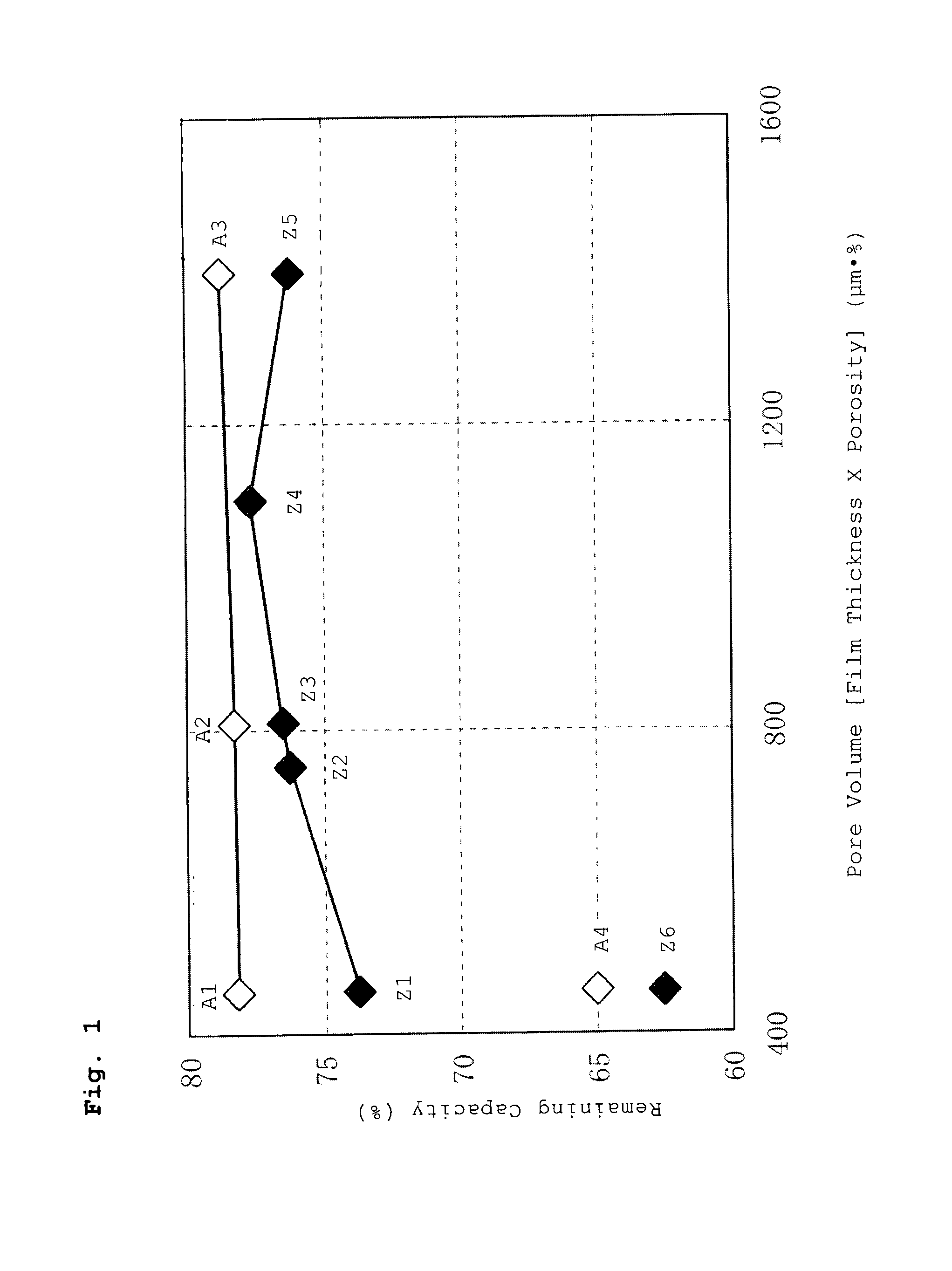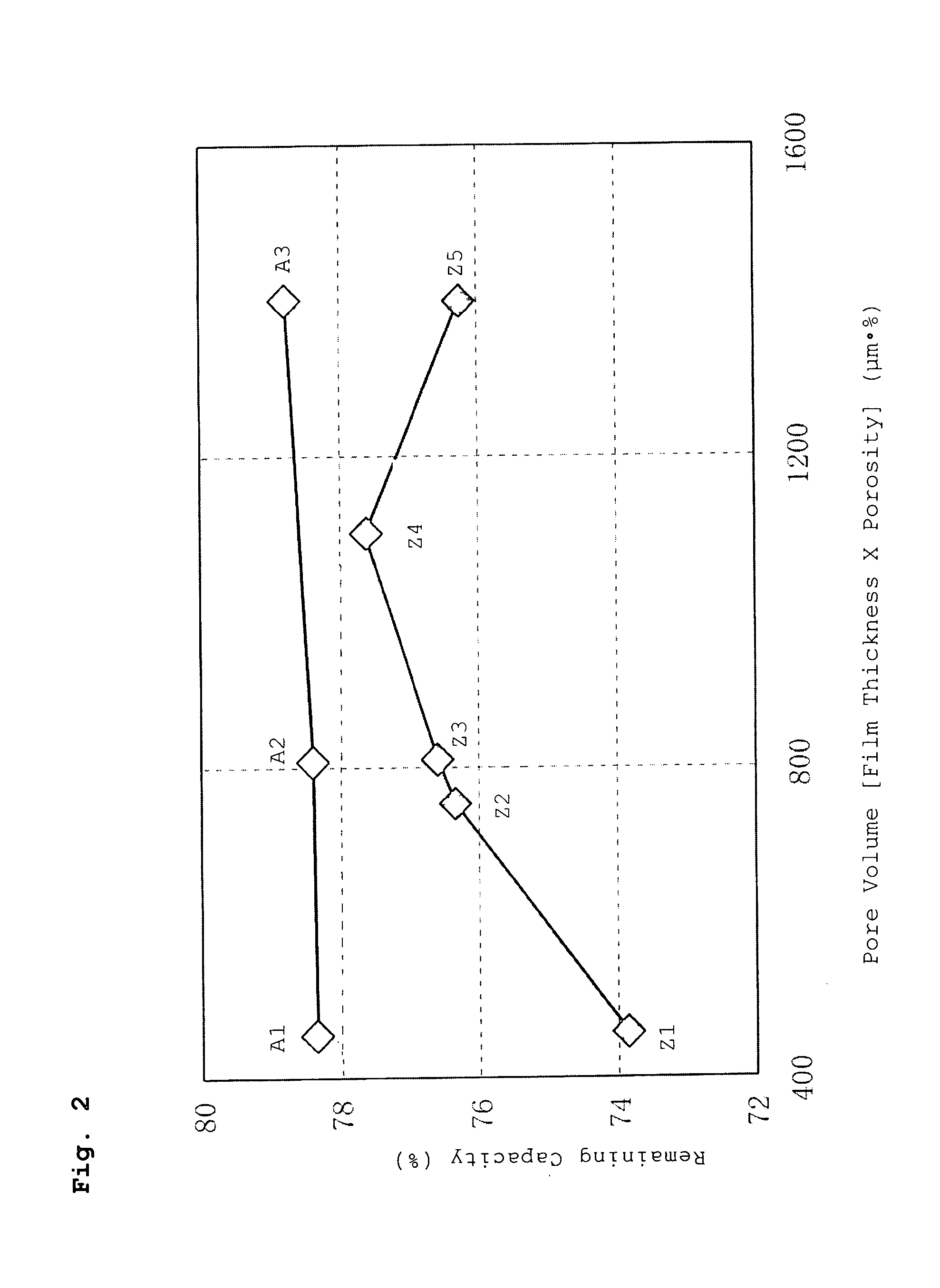Non-aqueous electrolyte battery
a non-aqueous electrolyte, secondary battery technology, applied in the direction of cell components, final product manufacturing, sustainable manufacturing/processing, etc., can solve the problems of deterioration in discharge capacity, increased power consumption of mobile information terminal devices, and expected growth, so as to improve discharge capacity, reduce negative electrode and separator damage, and improve cycle performance.
- Summary
- Abstract
- Description
- Claims
- Application Information
AI Technical Summary
Benefits of technology
Problems solved by technology
Method used
Image
Examples
embodiment
[0058] Hereinbelow, the present invention is described in further detail based on examples thereof. It should be construed, however, that the present invention is not limited to the following examples but various changes and modifications are possible without departing from the scope of the invention.
[0059] Preparation of Positive Electrode
[0060] First, a lithium iron phosphate-based compound (LiFePO4) having an average particle diameter of 0.8 μm, which is a positive electrode active material, and a carbonaceous conductive agent were mixed at a ratio of 92:5 to prepare a positive electrode mixture powder. Thereafter, a solution in which fluorocarbon polymer powder (polyvinylidene fluoride) as a binder agent is dissolved in an N-methyl-2-pyrrolidone was added to the positive electrode mixture powder, and they were mixed together. Thus, a positive electrode slurry was prepared. The mass ratio of the positive electrode mixture powder and the binder agent was adjusted to 97:3. Next, ...
example a1
[0072] A battery prepared in the manner described in the above embodiment was used for Example A1.
[0073] The battery fabricated in this manner is hereinafter referred to as Battery A1 of the invention.
example a2
[0074] A battery was fabricated in the same manner as described in Example A1 above, except that a separator having a film thickness of 18 m and a porosity of 45% [pore volume 810 (μm·%)] was used as the separator.
[0075] The battery fabricated in this manner is hereinafter referred to as Battery A2 of the invention.
PUM
 Login to View More
Login to View More Abstract
Description
Claims
Application Information
 Login to View More
Login to View More - R&D
- Intellectual Property
- Life Sciences
- Materials
- Tech Scout
- Unparalleled Data Quality
- Higher Quality Content
- 60% Fewer Hallucinations
Browse by: Latest US Patents, China's latest patents, Technical Efficacy Thesaurus, Application Domain, Technology Topic, Popular Technical Reports.
© 2025 PatSnap. All rights reserved.Legal|Privacy policy|Modern Slavery Act Transparency Statement|Sitemap|About US| Contact US: help@patsnap.com


